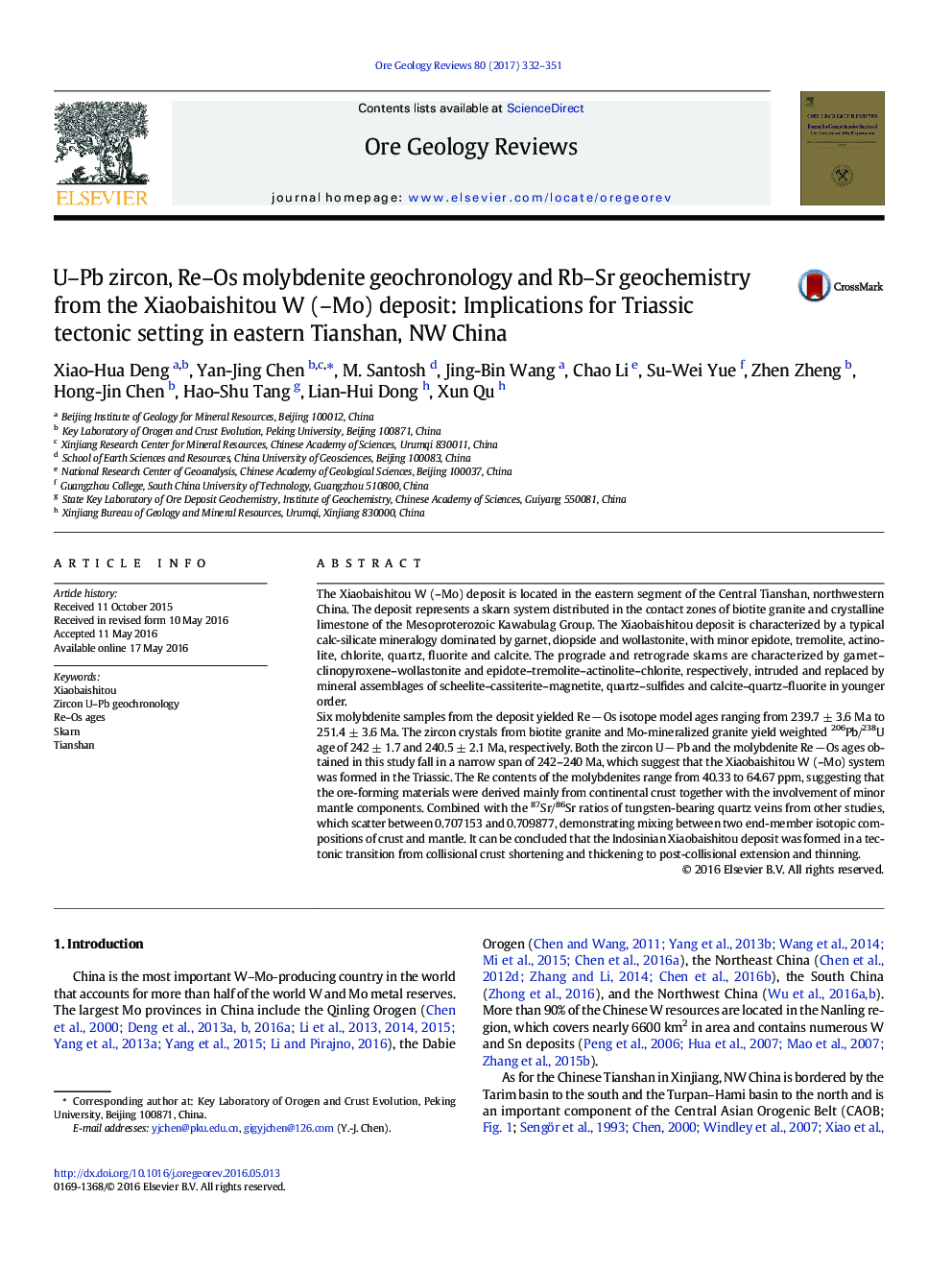| کد مقاله | کد نشریه | سال انتشار | مقاله انگلیسی | نسخه تمام متن |
|---|---|---|---|---|
| 6435611 | 1637226 | 2017 | 20 صفحه PDF | دانلود رایگان |

- The Xiaobaishitou deposit is characterized by typical calc-silicate mineralogy.
- Re-Os and U-Pb dating constrained the mineralization to 242-240Â Ma.
- Re contents and Sr isotope suggest the fluids were sourced from granite and carbonate.
- The Xiaobaishitou is a skarn deposit formed in a tectonic transition setting.
The Xiaobaishitou W (-Mo) deposit is located in the eastern segment of the Central Tianshan, northwestern China. The deposit represents a skarn system distributed in the contact zones of biotite granite and crystalline limestone of the Mesoproterozoic Kawabulag Group. The Xiaobaishitou deposit is characterized by a typical calc-silicate mineralogy dominated by garnet, diopside and wollastonite, with minor epidote, tremolite, actinolite, chlorite, quartz, fluorite and calcite. The prograde and retrograde skarns are characterized by garnet-clinopyroxene-wollastonite and epidote-tremolite-actinolite-chlorite, respectively, intruded and replaced by mineral assemblages of scheelite-cassiterite-magnetite, quartz-sulfides and calcite-quartz-fluorite in younger order.Six molybdenite samples from the deposit yielded Re â Os isotope model ages ranging from 239.7 ± 3.6 Ma to 251.4 ± 3.6 Ma. The zircon crystals from biotite granite and Mo-mineralized granite yield weighted 206Pb/238U age of 242 ± 1.7 and 240.5 ± 2.1 Ma, respectively. Both the zircon U â Pb and the molybdenite Re â Os ages obtained in this study fall in a narrow span of 242-240 Ma, which suggest that the Xiaobaishitou W (-Mo) system was formed in the Triassic. The Re contents of the molybdenites range from 40.33 to 64.67 ppm, suggesting that the ore-forming materials were derived mainly from continental crust together with the involvement of minor mantle components. Combined with the 87Sr/86Sr ratios of tungsten-bearing quartz veins from other studies, which scatter between 0.707153 and 0.709877, demonstrating mixing between two end-member isotopic compositions of crust and mantle. It can be concluded that the Indosinian Xiaobaishitou deposit was formed in a tectonic transition from collisional crust shortening and thickening to post-collisional extension and thinning.
Journal: Ore Geology Reviews - Volume 80, January 2017, Pages 332-351